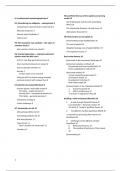Summary
Samenvatting financieel management en investeringsanalyse master bedrijfskunde
- Course
- Institution
Deze samenvatting is gebaseerd op de hoorcolleges gegeven door Lieven De Moor en deels gebaseerd op het boek Principles of Corporate Finance.
[Show more]



